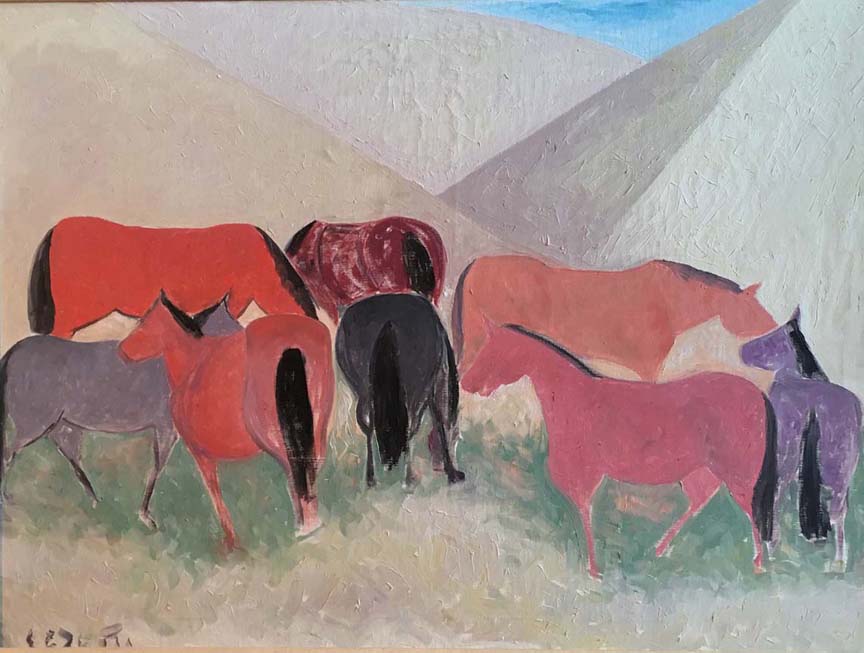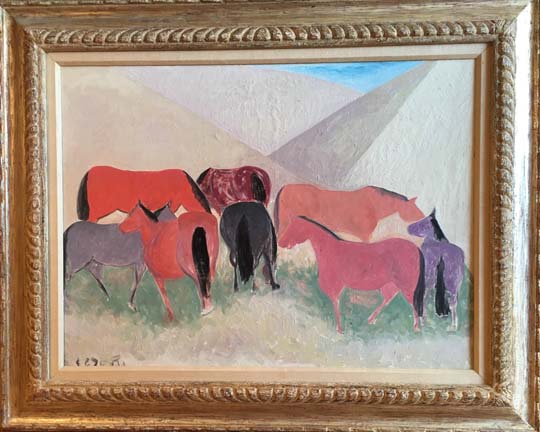Giuseppe Cesetti
1902-1990
The artist Giuseppe Cesetti born in Tuscania (Viterbo province) in 1902 from a family of farmers. At sixteen he left his family to travel through Italy, visiting ancient cities, observing the great art masters of the past and contemplating the most beautiful landscapes of the peninsula.
In 1927 he exhibited his works for the first time in Como, but his first solo exhibition in Florence in 1930. Giuseppe Cesetti was a great success among both collectors and among the artists of the time, such as Romano Romanelli, Ugo Ojetti Lorenzo Viani and Ottone Rosai , who become close friends.
In these early years his works show a deep knowledge of Etruscan painting, in which predominate light and bright colors, and influence of the Macchiaioli, particularly factors . Moreover, Cesetti is inspired by Paolo Uccello for equestrian scenes (one of his favorite subjects) and Piero Della Francesca to the representation of space.
In 1931 Cesetti becomes assistant of painting at the Academy of Fine Arts in Venice and around him gather many young artists. Thus it was born the movement of the Horse. In the same year he participated in the Quadrennial in Rome with three works, and caught the attention of critics who speaks of it as a "revelation."
In 1934 he exhibited five works at the Venice Biennale, including At Fence and Naked Damsel. The following year he exhibited thirty works in Milan, at the Galleria del Milione.
From 1935 to 1937 Giuseppe Cesetti living in Paris, where he attended Giorgio de Chirico , Aniante Antonio and Filippo de Pisis . On his return to Italy, he settled in Milan and joins the golden fish group which includes: Giovanni Scheiwiller, Francesco Messina, Salvatore Quasimodo, Raffaele Carrieri, Leonardo Sinisgalli, Arturo Tofanelli and others. In this period the artistic activity of Cesetti intensifies, so that Gio Ponti entrusting him with a ceramic floor to be exhibited in a room of the Italian pavilion of the Universal Exhibition in Paris in 1937, where there are the works of Massimo Campigli and Gino Severini.
In 1941 he became professor of painting at the Academy of Fine Arts in Venice, but in 1943 it is transferred to the Academy of Rome, the city where he founded the Century Gallery.
After the war, it became a provincial deputy of Viterbo and is dedicated to the recovery of the historical patrimony of the Tuscia damaged by bombing.
In 1946 he resumed the chair of Venice and organizes the prize Dove, hosted by the Biennale.
In subsequent years he continues its academic activities and promotes the Italian painters abroad, especially in Paris, through exhibitions and publications. In addition, continuing the family tradition, he is also breeding of thoroughbred horses.
Giuseppe Cesetti dies in Tuscania in 1990.
|


